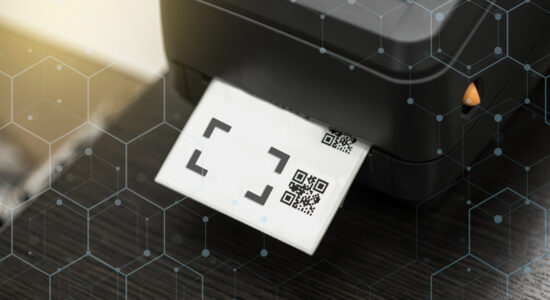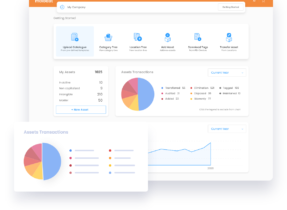Fixed Asset Tagging: Best Practices

Understanding Fixed Asset Barcoding
Before we launch into the differences, we’ll give you a brief overview of each technology, starting with the barcoding system. You will likely know what a barcode is. A barcode is a series of numbers (a code) that is recognized by scanning machinery. You will see barcodes on almost every product that you purchase in a store, usually on the back close to the ingredient’s or instruction label as an example but they’re not just used for store products. They can be used on anything – regardless of size! The label resembles a rectangular shape filled with black lines and underneath, the code. Nowadays, technology has come on leaps and bounds so barcodes can also be read by smartphones as well as by an online handheld application. There are other types of barcodes that consist of a serial number and hold other data. These are two-dimensional barcodes, QR codes and other types.
Understanding RFID for Enterprise Asset Management
This is a newer technology stands for Radio Frequency Identification – or RFID and is tag-based technology. An item is tagged with an RFID code and using radio frequency, the item can be tagged. Within online asset tracking using RFID, there are three main components, the reader, the antennae, and the transponder. Here’s how they work:
• The radio frequency communicates with the RFID tag on the item for asset counting
• The antennae picks up the signal and stores the information associated with the signal.
• When scanned, the data is picked up and displayed.
So – which is the right system for your business? Here’s some interesting information to help you decide.
Choosing Barcode Labelling
Barcoding your Fixed Assets is a cost-efficient method and it’s accurate too, plus as barcoding is a well-used and well-recognized technology, it’s a popular way of tracking inventories. Barcoding can be used on any product, large or small, there’s no risk of human error and it doesn’t matter where the barcode is, it can be read with a scanner or asset handheld application quickly and easily. Sounds great – but there are disadvantages too. A barcode must be scanned in a straight line and very close to the product, if a barcode gets damaged it can’t be read and as far as information is concerned, barcoding only stores a limited amount. You can also print barcode labels.
One of the major positives of barcoding or QR codes is that there is no need for sophisticated technology to read the tag. In fact, just using the camera of any normal mobile device may be enough to read the barcode. The software app on the mobile device should be able to handle the data easily. However with RFID, you always need an RFID reader. For this reason, most RFID providers print a normal barcode on the corresponding RFID label.
RFID Tags
What about RFID tags? They’re a newer technology and allows for automatic collection of data information, removing the risk of human error. There’s also no need to scan a product 'in a straight line' to read information. Plus, RFID tags can read lots of tags at once and even scan products from a distance. There’s better security with RFID as all information is password protected and another bonus is that RFID tags are plastic-coated so they’re reusable, making them a more cost-efficient option, longer-term.
The issues with RFID are that liquid and metal can alter the communication process between the tag, the asset mobile application and computer, plus, as it’s so finely-tuned, the other possibility is that it scans information by accident. RFID is more expensive than barcoding plus it takes time to build into your system, however, once it’s done, it’s done!
One of the disadvantages of RFID system is that the RFID readers may read RFID labels behind a wall in another room. So, it is not always easy to 100% determine the location of the Fixed Asset in question. On another hand, the reader doesn’t know if the RFID label is still stuck to the asset, or if it’s fallen away – for example, it’s on the floor or it’s been removed and stuck on another asset.
It’s still worth considering that both barcodes and RFID are excellent for Fixed Asset tracking and asset counting. Information from both is easily read through a device (such as a scanner).
If you’re on a budget, barcoding is better for you, but if you want to scan items from a distance, an RFID system is recommended. RFID tags are quicker to read yet some people report that barcode is more precise.
One of the biggest differences is that RFID can read data and write it too – but barcodes can only read it.
There is some talk about RFID replacing barcode technology in the future and it might happen but as barcoding is used successfully across the globe for billions of products, of all sizes, it would be unlikely to happen for a long while! It is more likely that QR codes will grow.
Final Words – Asset RFID Tags or Barcodes?
In conclusion, if you’re considering a Fixed Asset Management product for your business but you’re unsure which to choose, then both systems (RFID tags and barcoding) are good for Fixed Asset Management and when conducting an asset audit. Like all systems, there are some benefits to one and other benefits to the other. Really, it’s better to talk to an expert about which system is most suited to your business needs.
Subscribe to read the full article below.

